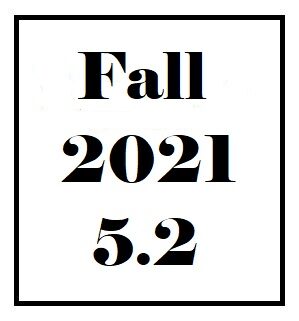Slow Looking: Sitting with the Black Lives Matter Murals of Downtown Raleigh
Kelsey Virginia Dufresne, North Carolina State University
Abstract
This project is centered on the Black Lives Matter murals from various artists, creators, and makers and their murals and street art in downtown Raleigh, North Carolina and on the methodology of Slow looking to critically experience the murals. The Slow looking experience equips us with a greater intentionality in sitting with these images, their messages, and the lived realities that they reflect and convey by slowly viewing the entirety of the mural and art. Cogapp’s Slow looking is seemingly most traditionally associated with high-brow art museums and pieces, but I want to challenge these associations—while retaining the intentionality of the experience, of sitting with a visual artifact at great length for more immersive experience. But instead of passively observing these visuals, how can we draw upon these image-experiences to pay attention to what and how we are seeing, thinking, and feeling? How do these images surprise, shock, challenge, ignite you? Simultaneously, I want to grapple with my own positionality as a white woman, educator, and student in relation to these murals and their messages.
Note: The images included are all from Raleigh, North Carolina that I took over the summer of 2020 and the winter of 2021.
Making, inventing, and creating is not exclusive to engineers or artists—nor has it ever been. But most traditionally, the innovative and noteworthy projects are associated with disciplines that fall beyond the confines of the humanities. The humanities, on the other hand, is associated with paper—producing papers and books, studying print-based media and literature, and teaching and learning through paper-centric means. And at the same time, newer and more unique terms are being coined to reflect the unconventional and nontraditional methods and strategies that blur the boundaries of disciplines: that which would have been understood as work of designers and inventors is now being adopted by those studying English.
Tharp and Tharp offer discursive design in Discursive Design: Critical, Speculative, and Alternative Things, exploring how “[discursive design] is a catalyst for reflection” (2018, p. 103) that ”engages with ideas, arguments, counterarguments, and questions so as to meaningfully contribute to a topic or debate of sociocultural relevance” (p. 76).
Alternatively, Garnet Hertz wrote “What is Critical Making?” (2016) to explore a different, yet entirely similar, concept and methodology that relies on making that prioritizes intentionality, critical thinking and analysis, and the opportunity to learn through experimentation and doing. Tharp and Tharp, focusing on discursive design, offer rich clarity on the landscape of this production-based field, whereas Hertz offers similar value in exploring critical making. Together, these terms provide a valuable framework for understanding and contextualizing the methods that illuminate the role of design and creation with more humanities-oriented work. But, these are firmly academic terms that carry institutional politics and territorial associations—attempting to carve out space in the world of research.
Every day, people and communities are creating, exploring, and learning by doing—not bound by disciplines or terms or theories. We could read their work as discursive design, critical making, or even mobile networked creativity (de Souza e Silva & Xiong, 2021). This work could align with either term and corresponding framework, yet it is not for the academy.
-----
Briefly, yet importantly, I am white—a white woman. I am a cisgender person—married to a cisgender white person.
I live in Raleigh, North Carolina—a city I love as much as I hope to leave—where I have lived for several years as I attend NC State University. Before that, I lived in rural Eastern North Carolina, where seagulls flocked around Target’s parking lot and my high school had weeds and cats living on the roof of our leaky buildings. Before that, I lived in El Paso, Texas—where I could see Juarez, Mexico from my bedroom window, where I often was as I watched Buffy the Vampire Slayer and read teen fiction that I was positive could be about my life. Before that, I lived in Rhode Island—where my family did not fit in and our government duplex home sat in water (it was demolished a year later after we left). Before that, North Carolina again—where I had fairy wallpaper in my bedroom and was very worried about snakes in the forest and vampires in my closet. Before that, Delaware. Before that, New York. Before that, Missouri. Before that, Okinawa, Japan.
My family moved often—we were—are—military. My dad, a Marine.
I feel this is important. Raleigh was the first place I chose to live—and the first place I chose to stay in.
-----
To get to school, I drive through downtown Raleigh via New Bern Avenue—which eventually turns into Edenton and that eventually leads to Hillsborough Street, where I lived for three years. I don’t live downtown, but the drive through it makes me feel connected to the places, homes, streets, vendors, and sites.
I like Raleigh’s big oak trees that the city hold’s funeral-like ceremonies for if they have to be cut down—and I like the green spaces, and how you can avoid parallel parking if you want—or need. I like how the city has seemingly bloomed during my time here—how newer and newer shops pop up, and are able to stay. And I like how the brick buildings are slowly becoming decorated with murals and street art. I like how the sidewalks and the mailboxes and newspaper stands and roads are too. I like how we have murals dedicated to the USA Women’s Soccer Team, NC-based music artists, and of pseudo-stairwells.
I like how our city gets really excited for sunflowers that are planted at the North Carolina Museum of Art and at Dorothea Dix Park—and how people flock to these flowers.
I like the nature and the art. It is beautiful. My nana, a first-generation Italian American named Marcella Isabel Garafalo Story, taught me how to paint using watercolor in our backyard when I was in elementary school. We painted a bird house—and she has a scanned and dusty copy of my painting on her refrigerator in upstate New York.
-----
My positionality, my very being, has shaped how I experience this city, this state, and this country.
-----
This past spring and summer the murders of Ahmaud Arbery, George Floyd, and Breonna Taylor by the hands of white supremacy and police brutality led to global protests and demands for equality, reform, and justice.
When demanding for life and justice for those murdered—police struck back. Pepper spray and rubber pellets and arrests and killings.
Buildings demonstrated the wear and cruelty of mass injustice and racism. Plywood boards covered broken glass, windows, doors, walls. A narrative began swirling: look at the destruction of these rioters.
But the plywood pieces swiftly became poignant symbols. Within days, the plain boards were painted with messages of solidarity, with calls for change, with declarations of love and pain. These murals arrived quickly and powerfully—seemingly recorrecting the narrative: look at the destruction of this country; look at the destruction of racism.
-----
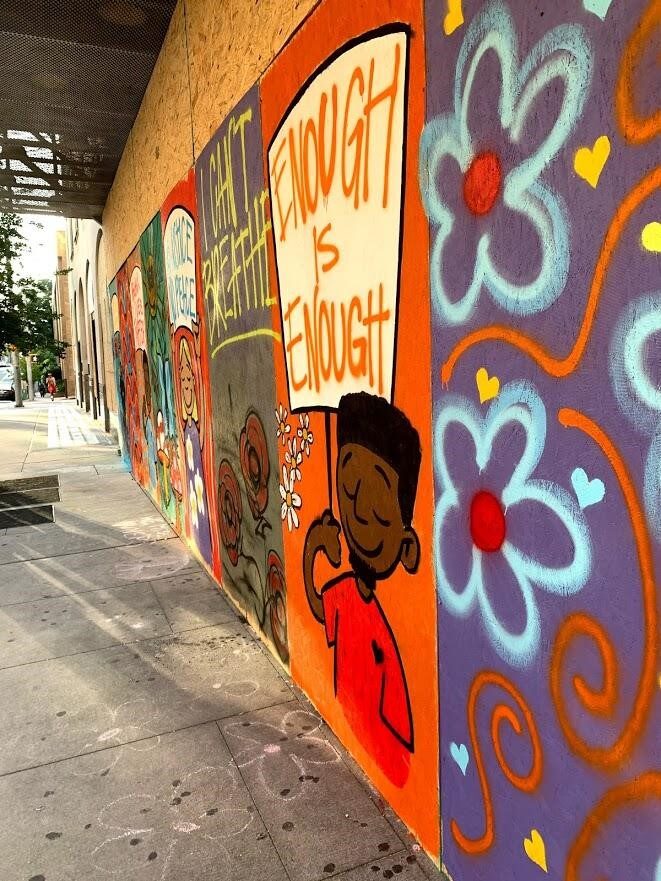
-----
My positionality, my very being, has shaped how I experience these murals—how I photographed them—how I write about them now—and how I have attempted to preserve them.
-----
Their plywood bases were used to preserve glass, or to cover that which was broken till it could be fixed. The plywood was not permanent. The murals, created and crafted and painted quickly, are temporal by design. One artist for the above mural (@Sanchz_919) told me that the mural was a “last minute idea.”
-----
My husband was asked to help put up plywood pieces; we had a drill and he knew how to use it. It took several hours—he left to go put up the pieces around dinner time and did not come back till late in the night.
I wondered if the shop he was assisting would add a mural.
He helped take down the boards a few days later.
-----
The murals were mostly created during the Summer of 2020. By the winter, many were gone. I don’t know where they went, or who has them.
But I tried to document them all: the fresh boards, the boards that had been painted over and over and over, and the ones that still remained from the summer.
Other individuals did a much better job than me, namely the Raleigh Magazine and Luke Keeler.
-----
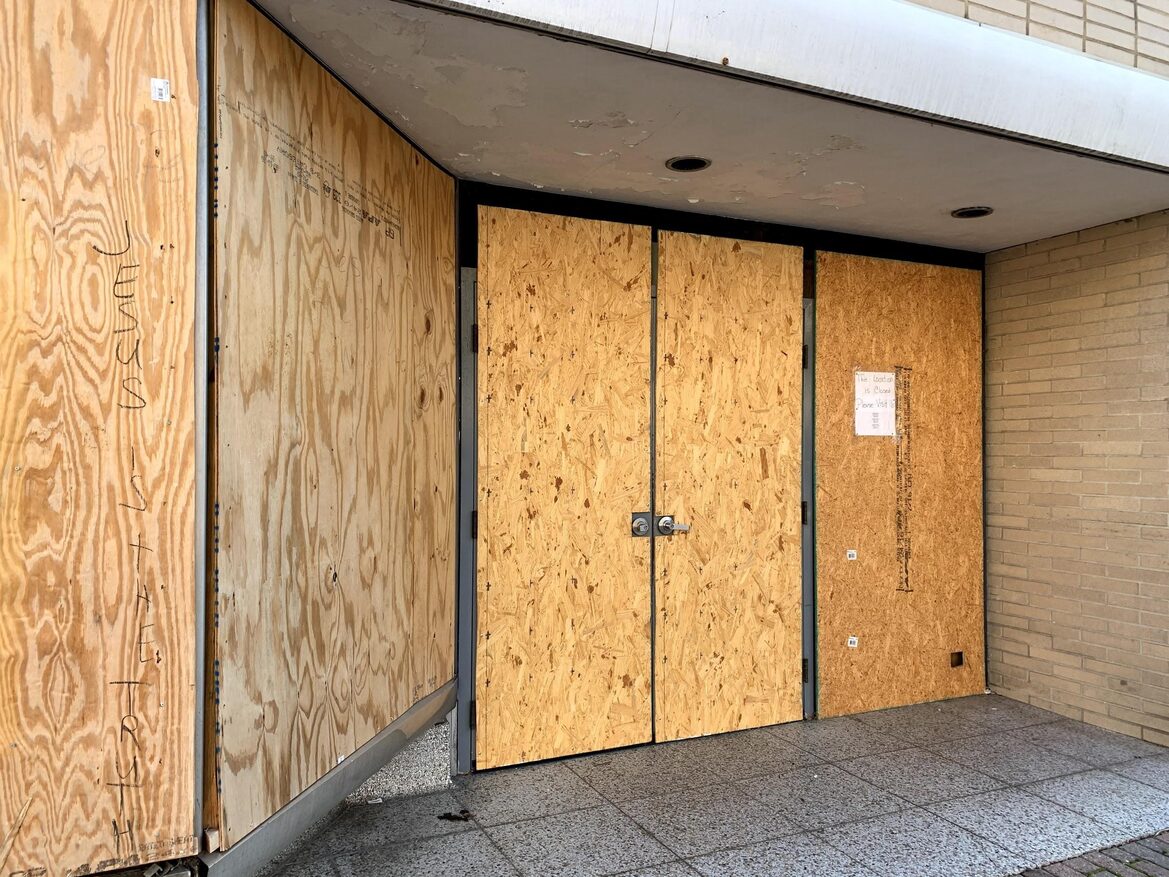
-----
Two artists gave me permission to use my photographs of their murals. I was able to find them on Instagram. I am still trying to identify all the artists and creators involved.
-----
During the wake of COVID-19, timber costs are going up. I am not sure why, and I won’t pretend to understand the economics of all that is involved. But I do know that plywood costs more now.
-----
The bare plywood pieces look naked to me now. Some bare patterns of tie-dye-like knots, ripples of the tree they come from, others look like pressed confetti pieces. Cut in perfect size to fit doors and windows, to fit around doorknobs. They are fashioned in great efficiency.
-----
“Jesus is the truth” is what one board reads. And the printed sourcing of the wood with its manufacturers’ information.
-----
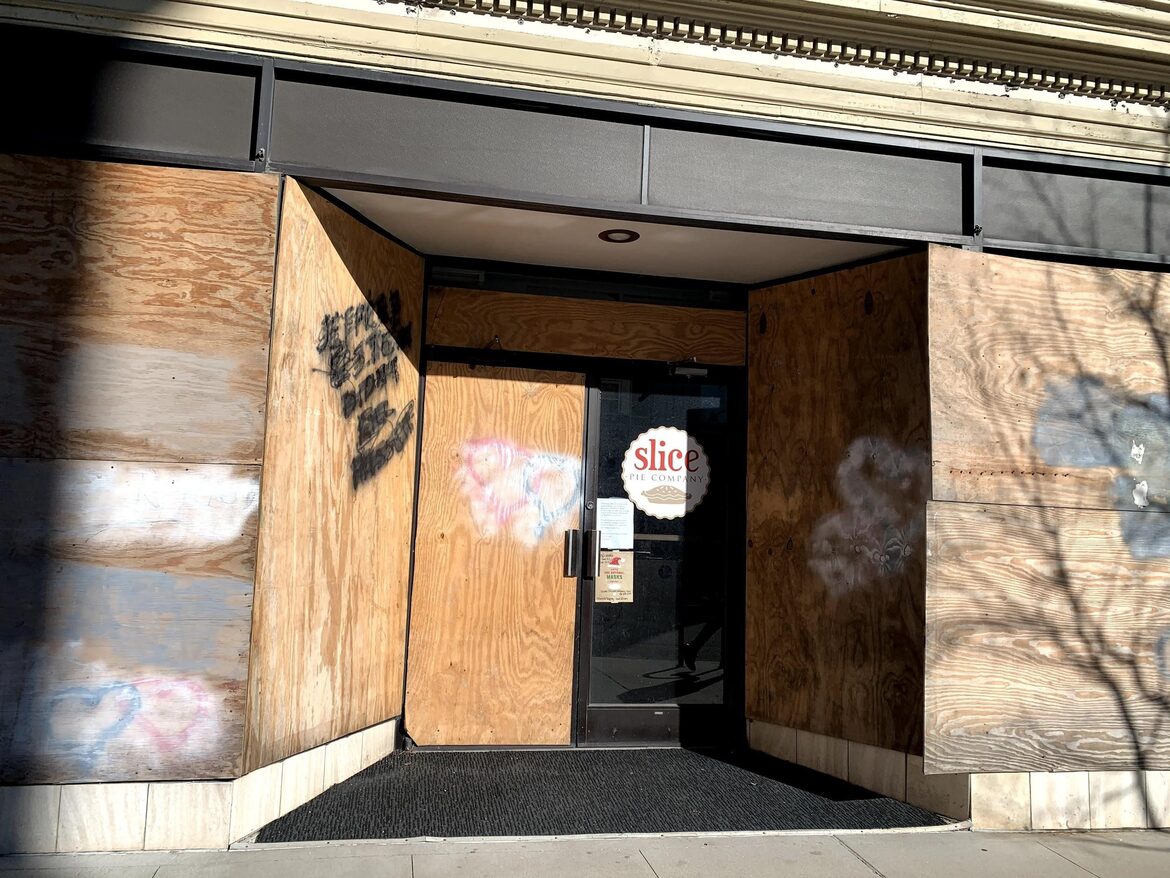
-----
The George Floyd & Anti-Racist Street Art archive is striving to preserve these artistic and cultural artifacts, as well as the Save the Boards to Memorialize the Movement organization (twitter: @STB2MTM).
-----
Sasha Costanza-Chock’s recently published book, Design Justice: Community-Led Practices to Build the Worlds We Need (2020), contains the pointed framing: “This book is about the relationship between design and power” (xvii). Constanza-Chock writes: “everyone designs, but only certain kinds of design work are acknowledged, valorized, remunerated, and credited” (2020, p. 14).
-----
I like art and I like the power of art in commenting on our world in a way that seems more accessible to me than the written word. Words are limited. Art is empowering, inviting, and digestible.
I wanted to know what my school was doing to preserve, celebrate, document, or archive the murals. Nothing.
I was encouraged to take photos myself.
-----
A few weeks before President Biden’s inauguration, I went to go take photographs of the remaining murals—frustrated that my university was not doing so.
Only a few remained, but on one corner—older boards were being brought back out to go back up.
-----
These murals carry an important history, as evidenced by their messaging, Yet, this is also emphasized in their materiality—from the boards, the colors, the array of textures from concrete, brick, and wood, and the very temporality of their being. Yet, even after the boards and the murals come down, their messages and significance must be remembered.
-----
In a “journey toward justice,” D'Ignazio & Klein write: “Data feminism is about power, about who has it and who doesn’t, and about how those differentials of power can be challenged and changed using data” (2020, p. 19). D'Ignazio & Klein write: “Challenging power requires mobilizing data science to push back against existing and unequal power structures and to work toward more just and equitable futures” (p. 53).
Following D'Ignazio & Klein’s work with Data Feminism (2020), these murals serve as vital artifacts of counterdata that challenge power, oppressive systems, and even what counts as data and as art. Of counterdata, they write: “So, though collecting counterdata and analyzing data to provide proof of oppression remain worthy goals, it is equally important to remain aware of how the subjects of oppression are portrayed” (p. 59). D'Ignazio & Klein also write about deficit narratives: “These narratives reduce a group or culture to its ‘problems,’ rather than portraying it with the strengths, creativity, and agency that people from those cultures possess” (p. 58).
-----
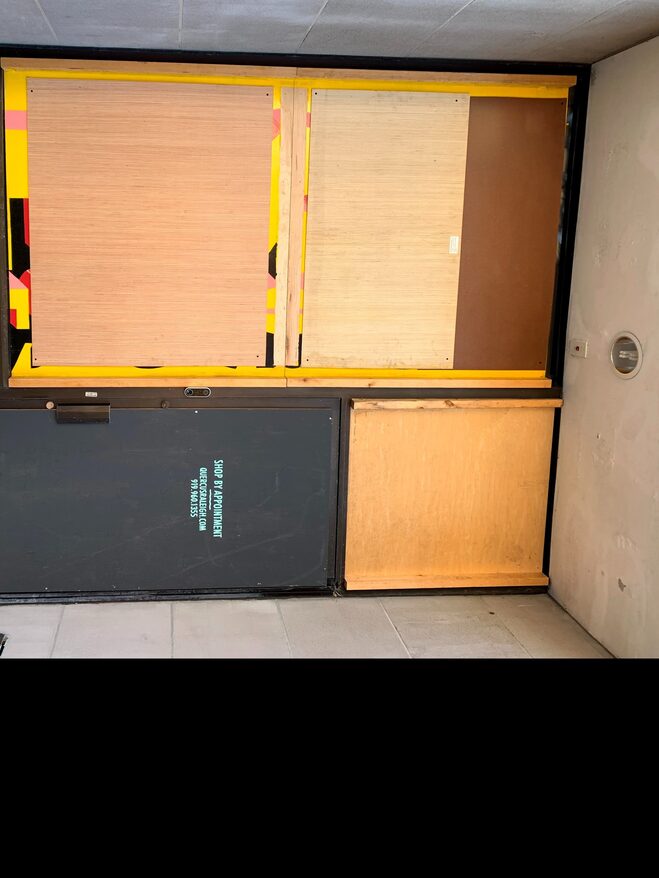
------
Avoiding the mild traffic, I stood in the middle of roads when I could—on sidewalks when I couldn’t—to document the remaining murals.
For the first time since the summer, I wasn’t driving past them as I infrequently drove to school—focusing on the cars surrounding me, paying attention to streetlights and stop signs, listening to Barbara Streisand, worried about where I would park once I got to where I was heading—worried about how many masks I had packed, and how I could avoid being around as many people as possible.
-----
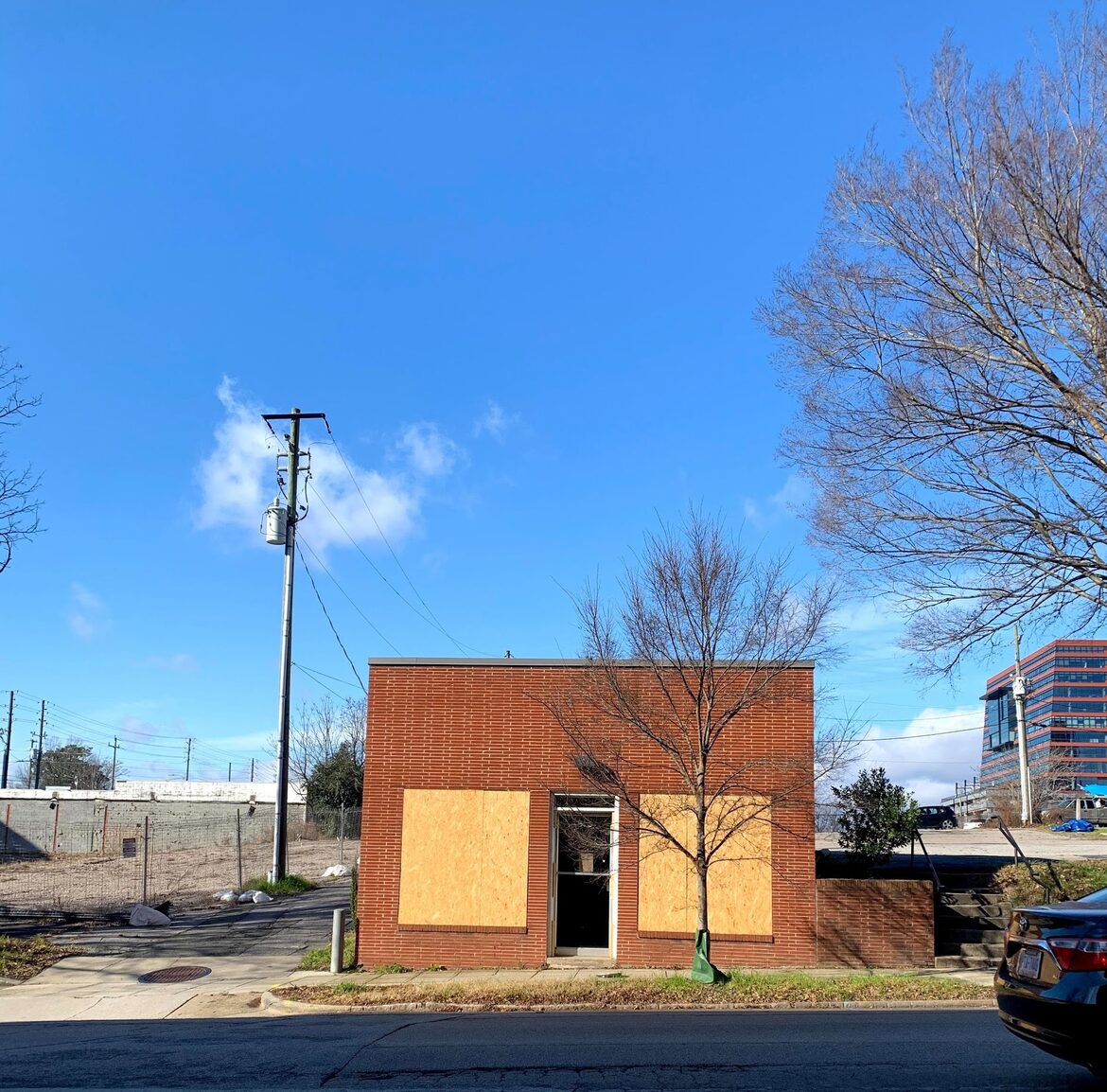
-----
With the website, I want the slow lookings to offer a similar experience. With COVID-19, it is not as viable an option to walk and visit these murals. To stand before them at great length. All the more, they could disappear at any moment. I was only able to document a few of the many.
-----
But slow looking, the slow panning through the mural, forced slowness. Forced sitting with the murals. Forced you not to drive past them.
-----
It was cold when I took the photos. Very cold—but still mild when compared to real cold climates. But because it was a Carolina cold, few people were outside. A few people sat on benches on Fayetteville Street, but more were driving by—quickly.
As I walked down the street, trying to find murals, I wish I had brought gloves.
-----
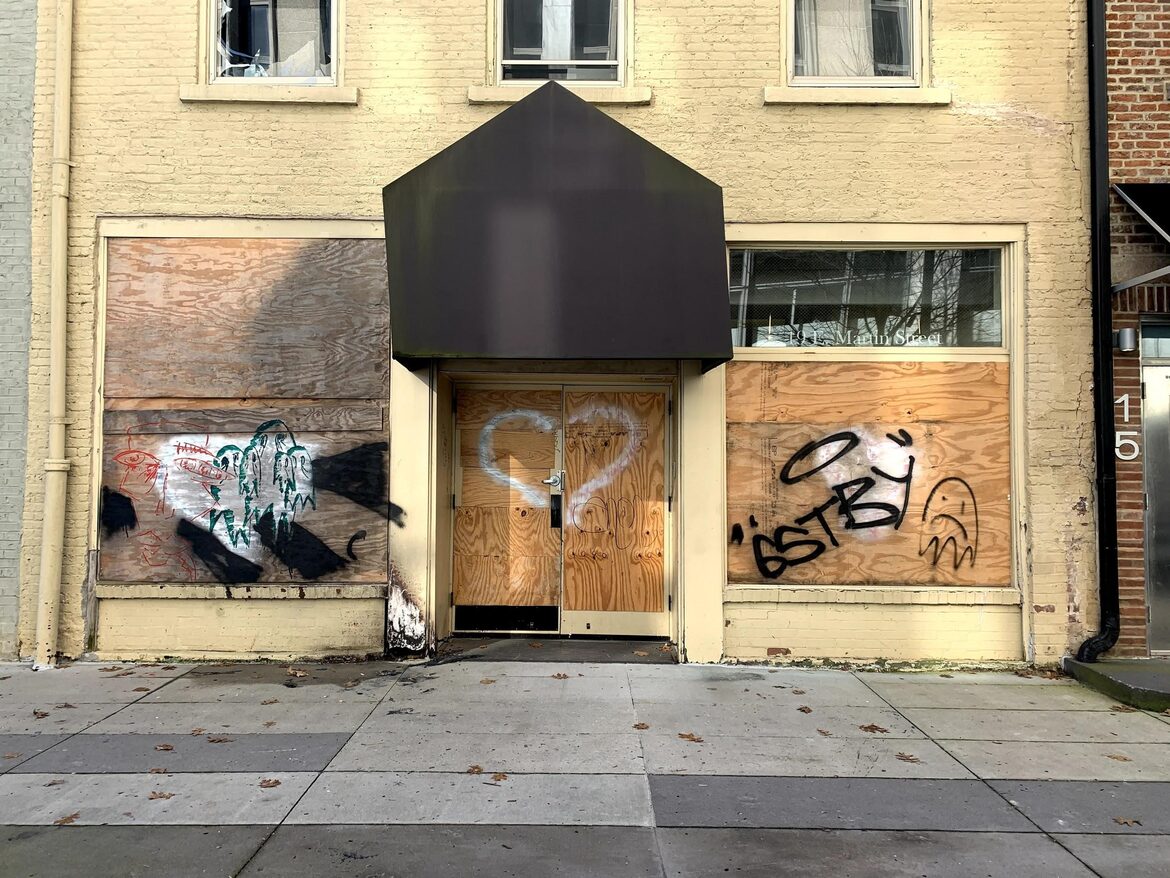
-----
I didn’t know where the murals still might be, so wandering around seemed the best bet. And downtown Raleigh is small, small enough to walk across.
Many buildings still had plyboard pieces up. But the boards were fresh—without paint and without murals. Construction was being done on a new engineering building and a new bank, and many familiar businesses were closed—permanently or not—because of COVID-19.
-----
I wanted digital preservation that simultaneously leans into experiential mediation and learning.
-----
-----
I think art does this too. And that these murals in particular do this the most.
-----
Blas’s art, which interrogates and critiques how “invisibility is often an unequally distributed privilege” (p. 156), relies on a compilation of 3D face scans to generate a collective mask that is the “aggregated result of many queer men’s faces” (p. 157). Blas emphasizes that the mask speaks to the use of such in different protests and social movements—where masks prevent singular identification while simultaneously asserting group “collective consistency” (p. 157). All the more, Blas identifies that power of masks: “It protects, defends, and enacts transformation; no one ever stays the same after they put a mask on” (p. 160). Through this, Blas emphasizes opacity over anonymity, the former of which Blas argues is more radical (p. 161)—yet both are “a foundation for human existence; it is an anti-identity politics. It’s an embrace of what is always transforming, what is always unknown within us” (p. 162). With much governmental and state policy ever-increasingly reliant on facial biometrics, Blas states: “To do away with the face, to escape it, is to break free from the oppressive logic that attempts to control it, define it, and categorize it. Facelessness is a political transformation into what is unknown, unidentified, and opaque. This is something joyful, something to be celebrated” (p. 162). Through this conversation and corresponding art work, we see how art serves as counter data to work against oppressive biases and practices in data collection and dissemination.
And as Blas draws great emphasis to the transformative power of masks and masking, I wonder how the buildings, businesses, and storefronts were perhaps masked: do these pieces perform the same protecting, defending, and transformation as the masks that Blas explores? And simultaneously, are the murals themselves masks? Covering and transforming the plywood barriers into artifacts displaying, illustrating human existence, a collective demand for protection and betterment. A transformation from barrier to protest.
-----
There are great tensions in my role here. My positionality has inherently led to me crafting a product that reflects these parts and facets of my being -- reflecting that which Donna Haraway calls situated knowledge (1988).
-----
The murals relay the multifaceted messaging of the community—they serve as a tangible display of hurt, frustration, anger, and love. While constructed as impermanent objects, they are incredibly vital artifacts. Art as protest. Art calls for justice and betterment. Art by the people.
-----
In “Community Data as Collective Care,” Feldman claims: “Designers should empower community members to determine what public good means for themselves by putting tools directly into their hands to increase autonomy” and “When communities have the power to measure, or to collect data themselves, they can deepen their understanding of their own experiences, advocate for themselves, and manifest their ideals of public good.” Here, I situated the murals as community-centered and generated data.
-----
This project directly deals with the critical issues of systemic racism in our community and in our country. The murals that illuminate the important message that Black Lives Matter are important cultural artifacts that deserve great attention, care, and consideration. Because higher education institutes in our area, namely NC State, have chosen not to recognize, celebrate, preserve, or draw attention to these murals and what they stand for—I hope that this project will serve as a call to action for our university system, but also demonstrate the breadth and power of the public.
-----
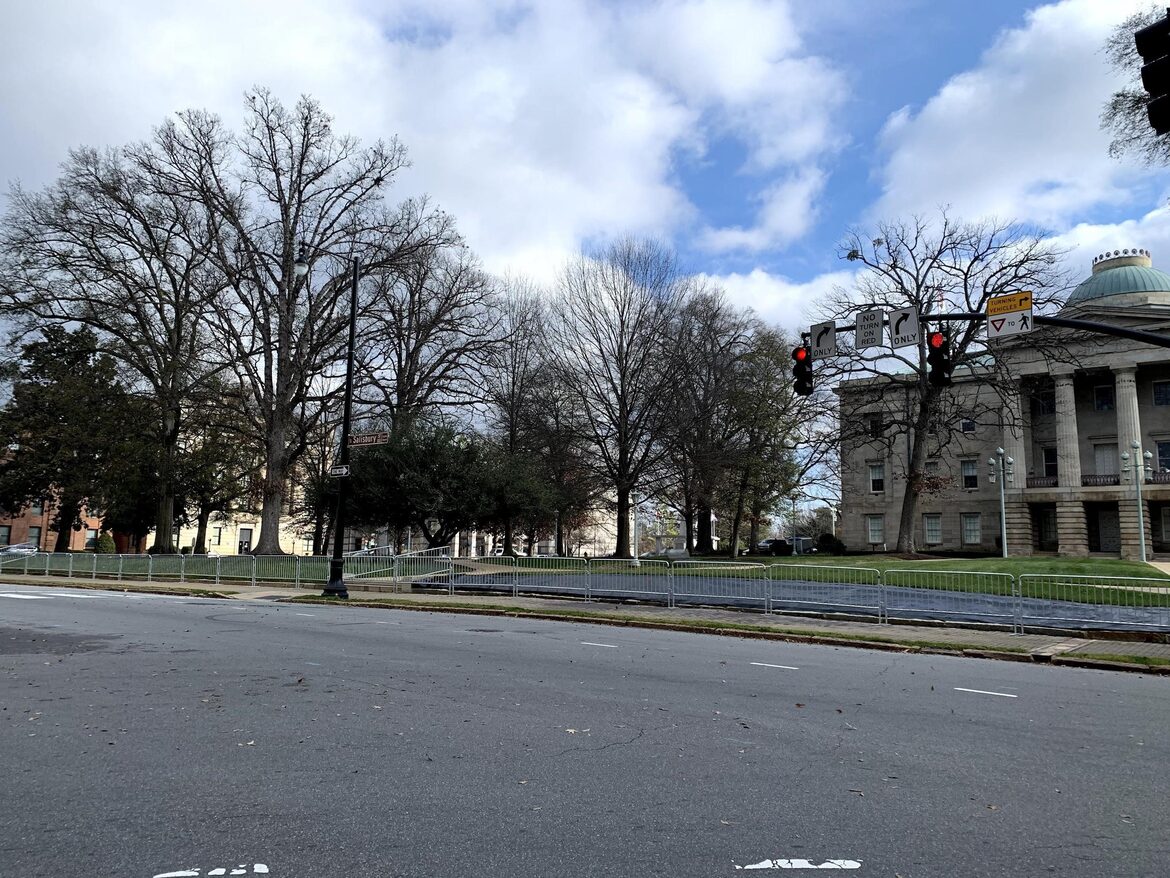
-----
Last time I was downtown, the barricades around the Capitol building were still there. I drive by them most as they run along Edenton and Hillsborough Street. Metal gates run around the entirety of the grassy square, and you can see where the Confederate Memorial was removed as a piece of tarp covers the earth.
An update: the barricades have been taken down. For the time being.
Usually, there are no gates. But they were there for months—preventing the public from accessing the grounds—from walking the grassy area and standing near the building that is meant to serve them—from dancing on the earth that once held a memorial of hate.
This contrasts the murals in every possible way. The metal gating is more permanent—harder, colder. A barrier. A sign of inaccessibility, a sign of who can enter and who cannot. A barrier of “protection” for the government: a bubble barrier. Ironic that the government is enacting this display of needed protection, when Black Americans and People of Color are dying at the hands of the government and their action, or lack thereof.
-----
In “Can Art Change the World? Inside the Debate Raging Over Black Lives Matter Murals,” Mark Wilson writes: “[the Black Lives Matter Murals] undeniably capture a historic moment. But they also raise thorny questions about whether public art can be a catalyst for change—or merely a distraction” (2020). As Wilson focuses on the DC road mural that has been identified as a display of gentrified performativity, Wilson simultaneously offers the historical context of this artistic genre—tracing it back to Diego Rivera, José Clemente Orozco, David Alfaro Siqueiros who utilized the medium to display history. Wilson notes that “murals stuck around as an American art form, spurred on by local communities, and especially Latino and Black artists, throughout the 20th century.” Thus, the murals serve as an opportunity to reclaim: to reclaim space, history, and community identity.
References
** All art and photographs of art belong to their respective creators and artists.
Blas, Z., & Gaboury, J. (2016). Biometrics and opacity: A conversation. Camera Obscura: Feminism, Culture, and Media Studies, 31(2(92)), 155–165. https://doi.org/10.1215/02705346-3592510
Constanza-Chock, S. (2020). Design justice: Community-led practices to build the worlds we need. MIT Press.
Design Justice Network. (2016). https://designjustice.org
/De Souza e Silva, A., & Xiong, M. (2021). Mobile networked creativity: Developing a theoretical framework for understanding. Communication Theory, 31(4), 821-840. https://doi.org/10.1093/ct/qtaa006
D'Ignazio, C., & Klein, L. F. (2020). Data feminism. MIT Press.
Feldman, A. (2021, March 22). Community data as collective care. Medium. Retrieved from https://abigailfeldman1.medium.com/community-data-as-collective-care-ed82aad73c5d
Haraway, D. (1988). Situated knowledges: The science question in feminism and the privilege of partial perspective. Feminist Studies, 14(3), 575-99. doi:10.2307/3178066
Hertz, G. (2016). What is critical making? Current. https://current.ecuad.ca/what-is-critical-making
Slow looking: A Cogapp Labs product (beta). (N.d.) Retrieved from https://slowlooking.cogapp.com/
Tharp, B. M., & Tharp, S. M. (2018). Discursive design: Critical, speculative, and alternative things. MIT Press.
Wilson, Mark. (2020, June 18). Can art change the world? Inside the debate raging over Black Lives Matter murals. Medium. Retrieved from https://medium.com/fast-company/can-art-change-the-world-inside-the-debate-raging-over-black-lives-matter-murals-6fa334f925d5
